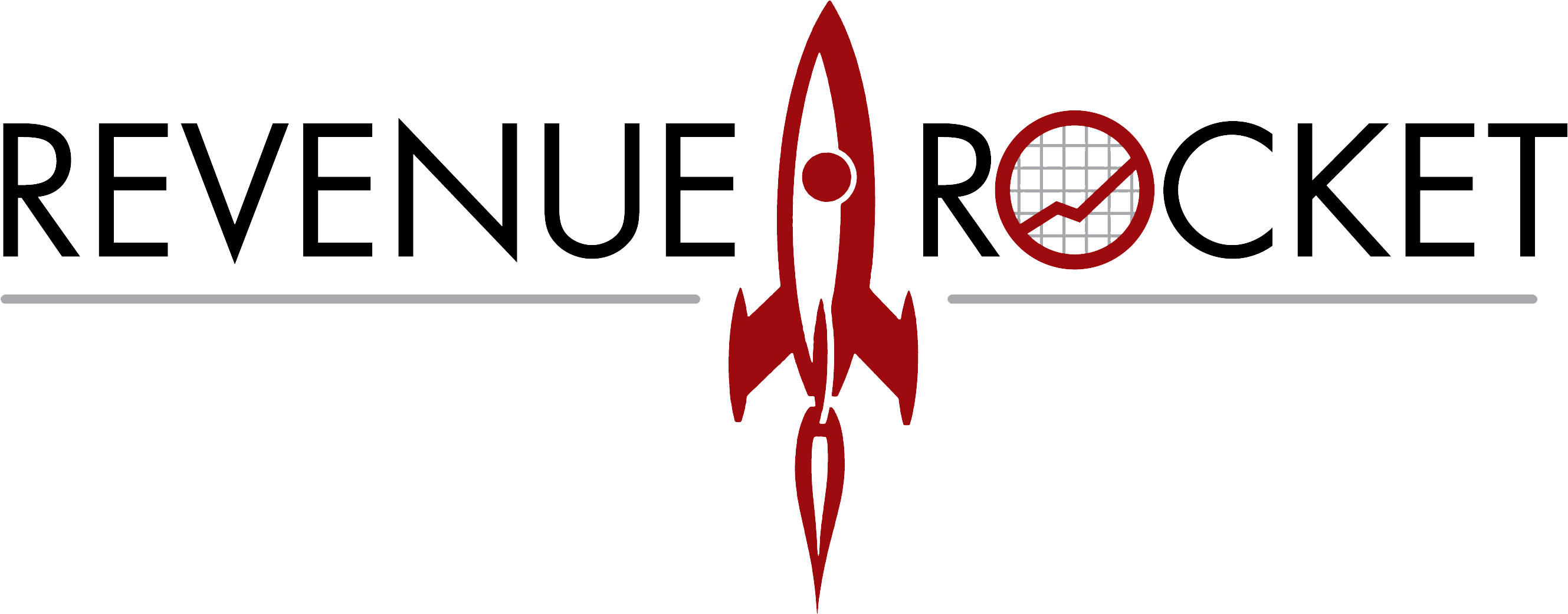10 Jan Understanding Customer Data in M&A Transactions

Listen to Shoot the Moon on Apple Podcasts or Spotify.
Having detailed information on your customers and their impact on your business is paramount before, during and after a business combination.
Here’s what we cover:
- What to customer data do you share with a buyer before a signed LOI
- What will a buyer look for within your customer data?
- Compiling customer data
- Customer data hygiene
- Put yourself in the buyers shoes: what customer data would you want to see?
Transcript:
Mike Harvath 00:04
Hello, and welcome to this week’s Shoot the Moon podcast broadcasting live and direct from revenue rocket world headquarters in Bloomington, Minnesota. As you know, revenue rocket is the world’s premier growth strategy and m&a advisory firm to IT services companies. With me today. Happy to report that my partner’s Ryan Barnett and Matt Lockhart. Welcome, gentlemen.
Matt Lockhart 00:26
Good to be with you, Mike. I know that as we roll into the holidays here, we’re gonna get to we’re not going to see each other as much. But let’s keep rolling.
Ryan Barnett 00:39
Absolutely. And Mike again, got last week, there’s some construction and seems like it’s revenue rocket dot and growing so much. You’ve hired an army, I mean, the space is looking pretty, pretty nice.
Mike Harvath 00:51
Yeah it’s coming along, these guys are pros. So, happy to invite our listeners to come take a look when you’re in Minneapolis can show you around a little bit done in the space for 15 years. And we figured it was time for a little refresh and expansion. We’re excited about it.
Matt Lockhart 01:08
Let’s do a holiday toast podcast here pretty quick. And maybe we can talk a little bit about the expansion of the team. And it’s been pretty amazing. And as, as we know, from watching, so many of our clients, there is really nothing more fun than than growing your team.
Mike Harvath 01:30
Absolutely. It’s all good. Ryan, I think we’re talking about customer Data today, right?
Ryan Barnett 01:36
Yeah, today, it’s a relatively short topic. But it’s really important to when it comes to listing a company for sale. So this is really targeted towards sellers. And the topic is, it’s a part of it is hygiene around your customer data and what customer data means. But ultimately, we take a step back, understanding the context of what you know about your customer, and what trends they have, and, and knowing a little bit more about your customers is critical in presenting that to a way that a buyer can really appreciate your customer base. So, Mike, and you want to start off at the high level, and then we’ll can start to dig into some specifics.
Mike Harvath 02:18
Yeah, I think you you know, the highest level I would say is if you got to talking to a buyer, they’ve got to get to know your customer, your customer profiles, metrics around your customer acquisition, how long they tend to work with you, there’s all kinds of data if you can think about walking a mile in the shoes of the buyer of what you’d like to see with the customer data. And I think getting customer data together and the hygiene around customer data, as you prepare for an exit or a sale is super, super important. It seems to be always a little bigger left than most sellers anticipate. And not something, frankly, that they spend a lot of time on managing the business on a day to day and month to month, year to year timeline. So we’re going to talk a little bit about you know, what is good customer data hygiene, and how should you think about it, and maybe give you a few tips and tricks as you run your business kind of tune that up so you can be ready for a transaction someday.
Ryan Barnett 03:17
Yeah, and I’d like to start actually with one big concept and to make sure your customer data for the most part is going to be blinded. So, all the way until post signed loi, you’re typically not going to give away a customer name. So think about anonymized customers or customer numbers. We like to think about customers by labeling them with an industry or a aggregated related customer data by industry or size. So we’re not gonna get you don’t want to give away a customer list through the process until you get to the due diligence in which serious buyers will be asking about contract contract terms and such. So think about one, just keep your customer data safe. And make sure that the companies that you’re dealing with keep that database. So that’s the first thing from a buyer point of view, and you are selling and putting things together. The there’s critical information that you do want to see. And one of them is your customer data for the last three years by year. So you want to see customers 12345 and 6, how they did for let’s say 2019 2020 to 21, and year to date in 2022, which you don’t want to do is put together your number one customer for 2020, your number one customer for 2021 and your number customer turning 23 or 22. And they’re all different. So what you’re looking for is what’s the cumulative total of revenue for those customers over three years. We’ve seen data in a great variety of ways. And that’s oftentimes is a confusing point. So think about what customers are coming back, which ones are the largest customers, which ones are providing the most value for. And in start with their think it’s really critical to start with. The second component is really trying to understand your revenue by customer by type. So if you have a certain number of revenue lines that you’re looking at, and let’s say it could be a product offering, it’s helpful to understand what you’re selling. And by kind of when you did that, and I oftentimes is a little bit harder task than you may think, if you’re pulling data from ConnectWise, you’re pulling it from your invoicing systems, or you’re pulling it from somewhere else. Oftentimes, these systems are not linked up on the actual invoice amount, or the total amount compared to what was actually build. So as Mike said, there may be a little bit more of a lift to this than you think. So start thinking about it early. The third thing that buyers are going to look for are customer concentration. So when we when we look at a seller, you want to look at your top customers for what’s your top one customer, the percentage of revenue from your top one customer percentage revenue from your top five customers, essentially 10 customers and 25 customers and then total. And that helps firms determine some level of risk, or may even help to understand by nailing one or two more big customers, so you can really expand the customer base. So those are three things to keep in mind, your your historical revenue, your concentration, and your revenue biotype. So with that, I’ll turn over to Matt, and just love to hear a few ideas of why this is critical, and what buyers may be looking for within this dataset.
Matt Lockhart 07:00
I think that a couple of things on that and why it is so critical. The buyers, think about the concept of sustainability, right? Obviously, buyers are going to be looking at customer set and saying, Okay, what’s the risk of attrition within those customers, and how much is the relationship with the selling firm, based upon one, two, or three key individuals. And if those individuals walk out the door, then the customers are going to walk out the door? Well, the more that you can demonstrate, you know, sort of cleanliness and thoroughness of the data that you have around your customer, the more that a buyer is going to gain in confidence that they’re going to be able to sort of build upon that dataset and use that data set as a means for reducing the risk around attrition. And then obviously, if that can be what is tied together in the financials, is mirrored in your customer relationship management system, there’s an plus up because then you’re able to say okay, what is actionable, like truly actionable via the data, that gives me not only the opportunity to retain the customer, but also then to be able to build upon and grow that customer and add more value. So I think that, you know, retention, and sustainability is a key point that reduces that overall volatility risk for a buyer and has a direct impact on value and valuation. So you know, while we say Well, geez, can I can I just give the basics, right? And we see that a lot. Yeah, you can. But is it the best strategy? No. And so thinking about this, this concept, well ahead of time, obviously, it’s good business practice overall, right? But thinking about if you’re not great at it, how do I get better at it? well in advance of thinking about taking your firm to market.
Ryan Barnett 09:26
The other thing I’d note here is if when you’re compiling customer related data, and this is good for anyone to know, is buyers are going to be looking for the amount of recurring revenue. So think your your monthly type subscription or your annually type subscription that has some kind of service delivery associated with it and a contract that’s associated with it. It’s important to know and your repeat revenue, so what customers are coming back. It’s a subtle subtlety, but the recurring In revenue may have a different valuation than the repeat customer. But oftentimes, most customers that we deal with really actually don’t have a great handle on on that recurring. So you may have a little bit of homework to do on what is truly recurring, and what customers fit in that bucket. So if you’re offering managed services, how much of that is actually coming back versus repeat? So keep that in mind when you’re consolidating some of this data? It’s, it’s critical for buyers to know and the cleaner bettered is, the faster you can launch and more credibility your firm has in the eyes of the buyer.
Matt Lockhart 10:40
You know, Ryan, you’ve touched on this, but I want to give it also in that same context of repeat, and recurring is going back to the breakdown of revenue by service line, and which of those service lines have the sort of greatest impact on repeat and recurring revenue, and being able to demonstrate that, you know, isn’t just another value add for a buyer to be able to sort of build upon it and sustain it? So you know, great stuff?
Ryan Barnett 11:14
Yeah. Yeah. The other thing I’d add, take the same lens, but with profitability. And that helps gives buyer confidence on where accounts can be grown, or, or perhaps you’ve been moved away. It’s a relatively short topic for us, Mike, Matt, any closing thoughts?
Matt Lockhart 11:36
No great stuff. Again, you know, while Ryan is both the interviewer, he’s the expert here, so fall right up and learn more about how to make the make value out of your data.
Ryan Barnett 11:50
And we help clients with this every day. So it’s a journey that you should not do alone. So come we’d be happy to, to have you work with us.
Mike Harvath 12:00
Yeah, good segue, right. I mean, it’s just another plug for making sure you have a competent advisor who can help you on your journey of m&a, we’d certainly welcome the opportunity to have a conversation with you about how we can help you there. With that will tie a ribbon on it for this week’s Shoot the Moon podcast. We wish everyone a happy and healthy holiday and a prosperous 2023 If you’re not listening to our podcast prior to the New Year, and hopefully you will be so we can keep sharing some of our advice and counsel gleaned over the years of doing this. So that make it a great week. And tune in next week for more tips and tricks on how to grow your IT services business and or be ready for an m&a transaction. Take care and make it a great week.


